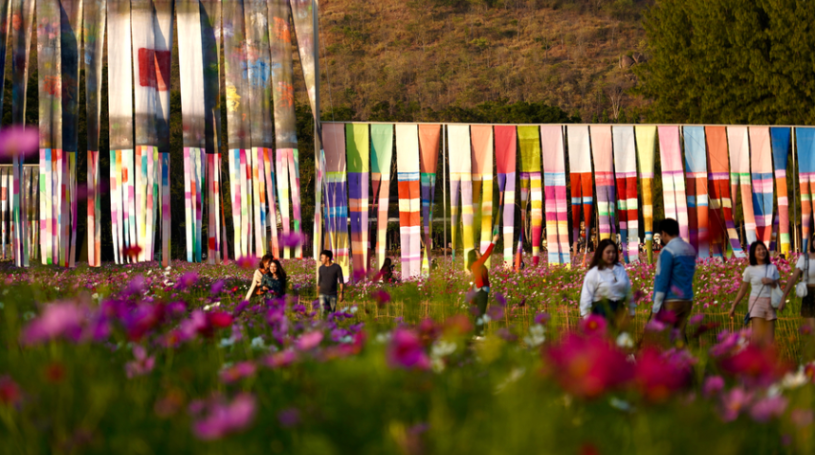Japan’s Closely Watched Exhibition, Aichi Triennale, Names Full Artist List for 2022
The Aichi Triennale, one of the most closely watched exhibitions of its kind in Asia, has announced the full list of artists that will participate in its upcoming edition, which is scheduled to run July 30–October 10 in the Japanese city.
Since last August, the Triennale has been announcing participating artists piecemeal, and with the addition of five artists, the total number of artists and collectives is up to 82 from 32 countries/regions. Among the high-profile artists included are Laurie Anderson, Leonor Atunes, Kader Attia, Diedrick Brackens, Cao Fei, Theaster Gates, Anne Imhof, Byron Kim, Yoshitomo Nara, and Gabriel Orozco, as well as the late Marcel Broodthaers and Ryoji Koie, who died in 2020.
The exhibition also includes a performance art program that will unfold throughout the course of the Triennale. Artists scheduled to stage works are Japanese composer Adachi Tomomi directing the John Cage’s late-career operatic works Europeras 3 & 4 and artist and filmmaker Apichatpong Weerasethakul will present his first VR work.
Another component of the exhibition is its Learning Program, which is “based on the fundamental concept that ‘art is not just for a few knowledgeable enthusiasts, but for everyone to enjoy and appreciate in their own way,’” per a release. As part of it, invited artists have been staging public workshops and field research in various projects since last fall. For its “Dashboard Camera” project, for example, AHA! (Archive for Human Activities) has been building up an archive “devoted to individual citizen’s records and memories of ordinary people.”
For this iteration, Aichi Triennale artistic director Mami Kataoka, director of the Mori Art Museum in Tokyo and the current president of the International Committee for Museums and Collections of Modern Art (CIMAM), has titled the exhibition “STILL ALIVE.” While nodding to the ongoing pandemic, the show’s title takes its name from a series by the late Aichi-born artist On Kawara, whose work is also included in the Triennale. Begun in the ’70s, I Am Still Alive took the form of telegrams that Kawara sent to various people with the titular phrase as a way to “continually [dispatch] the fact of his own existence during his lifetime,” according to the exhibition’s website.
“Through the medium of art, Aichi Triennale 2022 promises encounters with uncertainty, the unknown, a diversity of values, and overwhelming beauty, while also serving as an opportunity for thinking about how we can create an ideal, sustainable future together,” Kataoka said in her explanation of the exhibition.
The last iteration of the Aichi Triennale faced major controversy when the exhibition’s organizers closed a portion of the show during its opening weekend. That section, which looked at historical instances of censorship, featured a sculptural work, Statue of a Girl of Peace, by Korean artist duo Kim Seo-kyung and Kim Eun-sung that dealt with Japan’s history of ianfu, or comfort women. (During World War II, the Japanese Empire’s brutal colonial practices included forcing women from other parts of Asia into sexual slavery for its officers; Japan did not formally acknowledge this practice until 2015 and it is still considered taboo to discuss in the country.)
The censorship of Statue of a Girl of Peace caused 90 artists participating in the Triennale to sign an open letter against the move, and later for nine artists to call for their work’s removal from the show until Statue was reinstated. Despite protests, the censored section and Statue are set to go on view in Tokyo beginning April 2.

